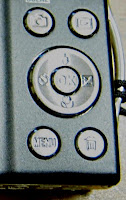Today, genetically engineered cultivars make up a major portion of the acres for many of these grain crops. As someone who has studied and worked in agriculture for over twenty years, you might wonder if that concerns me. It doesn't. The reason? In one word, science.
Consider the scientist. She observes a phenomenon and develops a hypothesis to explain it. She devises an experiment to test the hypothesis. If the experiment produces valid data, the scientist will publish their results.
Now, up to that point, there are many things that could go wrong. The scientist could be incompetent. The scientist could alter or fabricate data due to pressure from funders or the stress of getting tenure or due to a personal agenda. The results could be a fluke due to some factor the scientist failed to see. Just to name a few.
But it doesn't stop there. Once the results are published, other scientists will critically review the experimental design, data and conclusions. They will look for and challenge any inconsistencies or faulty reasoning.
And then it goes even further. If the studied phenomenon is significant to society, other scientists will attempt to repeat the experiment, or devise their own experiment to test the hypothesis.
Ultimately, for important questions, we begin to generate a body of documented experimental evidence. And this is what we have regarding the safety of genetically engineered crops, a large body of documented experimental evidence.
Yes, there are many voices who would dispute that statement. From what I have observed, most of those voices are coming from the mouths of bloggers, journalists, authors and activists. Those voices often quote or refer to scientific studies. And while I believe most of those voices have admirable intentions, a close read usually reveals misinterpretation and exaggeration. In fact, I have great respect for many bloggers, journalists, authors and activists, but for questions like the safety of genetically engineered crops, I will turn to the scientists.
Does that mean we need to stop questioning? NO! Does it mean we don't need to make changes to our food system? NO!
But I personally am very confident (again, thanks to science) about the steps I need to take to stay healthy, which is to eat lots of fresh fruits and vegetables and whole grains, moderate amounts of meat, fat and sugar, and to be careful and informed about safe food handling practices from farm to table (because an under-cooked hamburger, for example, or a bacteria-infested cantaloupe, could lead to serious long-term health problems).
And I am also confident (yay for scientists!) about things we need to do to protect the environment, which includes reducing soil erosion, conserving natural habitat, and improving pesticide safety in less developed countries.
Did you eat healthy food today? If so, thank a farmer. And then thank a scientist.
Here's a good article with more information:
http://www.forbes.com/sites/jonentine/2013/10/14/2000-reasons-why-gmos-are-safe-to-eat-and-environmentally-sustainable/







